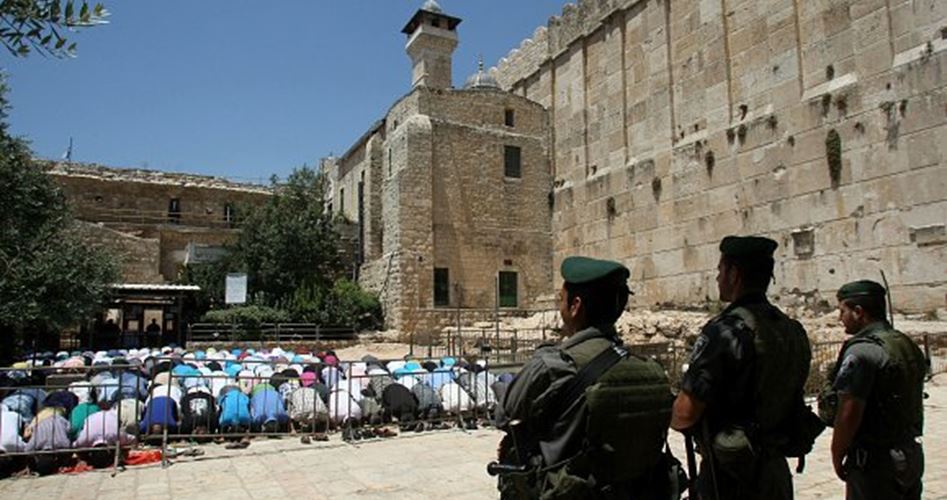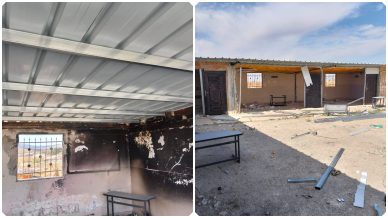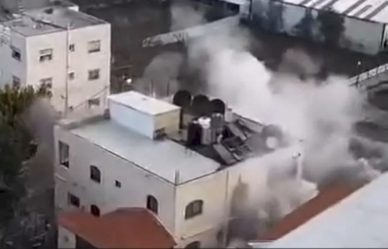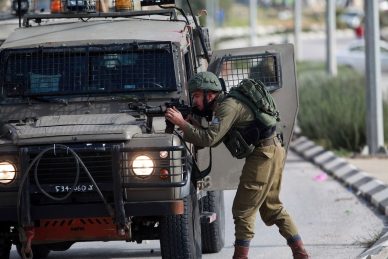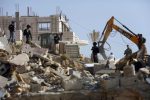The impact of the Ibrahimi Mosque Massacre in Hebron was not limited to blood martyrs and wounded; but rather since day one of the massacre the place has been transformed into a tight Israeli security complex in which all kinds of oppression are practiced against the Palestinians.
On the 15th of Ramadan in 1414 AH the criminal Jewish terrorist Baruch Goldstein committed a massacre against Muslim worshipers in the courtyards of the Ibrahimi Mosque in Hebron during the dawn prayers killing 29 worshipers and injuring 150 others.
Restrictions
Israeli security measures could be seen at the site of the massacre hundreds of cameras electronic gates high towers and heavy machine guns all supported by hundreds of heavily armed soldiers.
The above-mentioned Israeli restrictions are the consequence of the unjust and painful Shamgar Commission which was set up by the Israeli occupation authorities to investigate the horrific massacre.
The mosque is divided from inside and the entrances into it are encircled by electronic gates. At first glance crossing the mosque feels like crossing into a security headquarters or an army camp as the director of the Ibrahimi Mosque Hifzi Abu Asnina told the PIC reporter.
A warning Message
Settlements experts point out that the policies of the occupation which includes besieging the Ibrahimi Mosque and the imposition of strict security restrictions on the worshipers while entering and leaving the place and its division and allowing settlers in large numbers and giving them large space is a warning message to the people of Hebron in general and the people of the Old City in particular.
Abd al-Hadi Hantash a settlements expert in Hebron said that the gravest consequences of the massacre of the Ibrahimi Mosque was the new security measures that turned the place upside down and the religious hegemony over the mosque which enabled Jewish settlers to dominate the area around the mosque and its courtyards.
“The settlers controlled many facilities surrounding the mosque after the massacre and many sites and buildings such as the Osama bin al-Muknaz school the vegetable market the entire Awqaf district the Kaffasin market the Sahla market the Al-Kayyal mosque Al-Aqtab mosque and the old Takiyya.
These sites were turned into military sites and barracks some of them became housing units for settlers. Entry and exit of the Ibrahimi Mosque required the approval of Israeli security and could only be done under the supervision of hundreds of cameras and electronic gates.
Destruction of the economy
According to Haj Hashem Abdul Nabi Natsheh former head of the Hebron Chamber of Commerce the post-massacre measures in the city destroyed its economy and the settlement and security presence led to the closure of hundreds of shops and many markets resulting in hundreds of millions of dollars in financial losses.
He noted in a statement to the PIC that “The aim of all this was to empty the town of its inhabitants and turn it into a ghost town that the Israeli army and its settlers could roam freely.
All markets in the Old City were closed which included more than 1300 shops under the pretext of security and protection of settlers he said adding that one of the most dangerous and devastating consequences of the massacre of the Ibrahimi Mosque 24 years ago was besieging the Old City of Hebron and the economic destruction of the city in addition to the division of the Ibrahimi Mosque.

